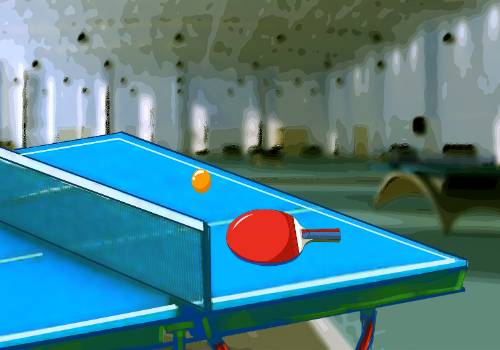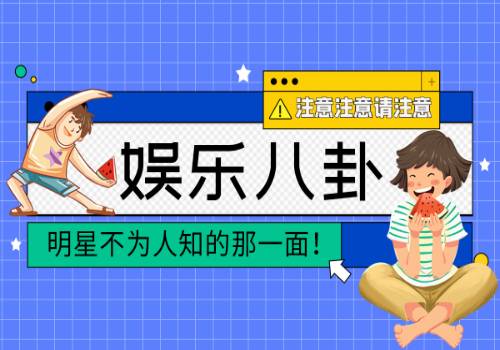以下是小编为大家整理的一般过去时课件,欢迎阅读与收藏。如果这12篇文章还不能满足您的需求,您还可以在本站搜索到更多与一般过去时课件相关的文章。
篇1:一般过去时的课件
教学目标;
知识目标:
 【资料图】
【资料图】
1掌握动词的规则变化及不规则变化。
2.掌握一般过去时的句式结构。
技能目标: .会运用一般过去式谈论事情。
情感态度价值观:友善对待他人,互相帮助。
教学重难点:一般过去时态以及动词的过去式构词法
教学过程:
Step 1 leading-in
展示课文中新邻居女孩的图片。
T:Look at this petty girl! Do you know who is she? Can you guess ?
学生发挥想象猜
She is my new neighbor .We become good friends now .Do you want to know when and how we become good friends?
T:When did she moved here ?
Step 2 While-reading
1、听录音并阅读所给短文,回答问题。
2、再次阅读短文,并回答问题:
How was Lucy’s new neighbor?
What did Lucy do next?
Did they become good friends after that?
3. 细读短文,找出文中的动词,小组讨论归纳动词变化(规则及不规则变化)
一般在动词的后面直接加ed, 课件呈现课文中不规则的动词see—saw ,have—had,
leave—left, ring—rang ,run—ran become—became
Step 3 After-reading
学生听录音跟读。然后学生自己朗读,并根据图片提示用一般过去时复述课文中这个小故事。
Step 4 Summary : 一般过去时
一般过去时态:表示过去某一时间所发生的动作或存在的状态。谓语动词要用一般过去式。经常与yesterday, last week, last month, last year, two months ago, the daybefore yesterday,in 1990, in those days等表示过去的时间状语连用。
动词变过去式的"规则:
1) 一般情况下在词尾直接加ed。如:play ― played work ―worked
2) 以e结尾的动词只加d. 如:live--- lived move ― moved
3) 以辅音字母+y结尾的动词,变y为i,再加ed. 如:study ― studied carry ― carried
4)以重读闭音节结尾的动词,如果末尾只有一个辅音字母,要双写最后这个辅音字母,再加ed. 如:stop ― stopped
5)不规则动词过去式的变法需要单独记住,如本课出现的:have - had, see - saw, leave – left , ring - rang, run - ran, become- became, hide - hid,is- was , put - put
三种句式。
(一)、学生写出含有行为动词的一般过去时的肯定句、否定句和一般疑问句,并进行肯定和否定回答,比较归纳出一般过去时的三种句式。
1、肯定句:主语+动词的过去时+……
2、否定句:主语+didn’t +动词原形+……
3、一般疑问句:Did +主语+动词原形+……?
(二)、学生在归纳出三种句式的基础上,两人一组,完成课本 老师巡视,帮助答疑并校对
答案,学生分角色阅读并表演对话,体会一般过去的三种句式在具体情境中的应用
1、He filled the basket with eggs.(改为一般疑问句,并进行肯定和否定回答)
___________________ ?Yes , ___ ____ /No ,_____ _____
2、He feltlonely .(改为否定句)He ____ _____lonely.
3、Does he often climb up the hill ?(用yesterday 改写)
______he _______up the hill yesterday ?
Step 5 Consolidation
用一般过去时叙述自己认识一位朋友的过程。(不少于50词)
Step 6 Homework:
以Last weekend为开头,描写你上个周末的活动
篇2:小学一般过去时教学课件
1.一般过去时表示过去某个时间发生的动作或存在的状态,常和表示过去的时间状语连用。一般过去时也表示过去经常或反复发生的动作感谢。
2.Be动词在一般过去时中的变化:⑴am 和is在一般过去时中变为was。(was not=wasn’t)⑵are在一般过去时中变为were。(werenot=weren’t)⑶带有was或were的句子,其否定、疑问的变化和is, am, are一样,即否定句在was或were后加not,一般疑问句把was或were调到句首。
3.句中没有be动词的一般过去时的句子否定句:didn’t +动词原形,如:Jim didn’t go home yesterday. 一般疑问句:在句首加did,句子中的动词过去式变回原形。如:Did Jim go home yesterday? 特殊疑问句:⑴疑问词+did+主语+动词原形?如: What did Jim do yesterday? ⑵疑问词当主语时:疑问词+动词过去式?如:Whowent to home yesterday?
动词过去式变化规则:
1)一般在动词末尾加-ed,如:pull-pulled, cook-cooked
2)结尾是e加d,如:taste-tasted
3)末尾只有一个元音字母和一个辅音字母的重读闭音节,应双写末尾的"辅音字母,再加-ed,如:stop-stopped
4)以“辅音字母+y”结尾的,变y为i,再加-ed,如:study-studied
5)不规则动词过去式: am,is-was, are-were,do-did, see-saw, say-said, give-gave, get-got, go-went, come-came, have-had,eat-ate, take-took, run-ran, sing-sang, put-put, make-made, read-read,write-wrote, draw-drew, drink-drank, fly-flew, ride-rode, speak-spoke, sweep-swept,swim-swam, sit-sat
4.句中be动词和动词一般情况下只能有一种而且也必须有一种。如:
Theyvisited my parents last weekend .
5.一般过去时中的be动词:一般用过去式:was were
was用于第一人称单数(I)和第三人称单数(he she it和其他人名或称谓,如:Ben 、his sister等);were用于第二人称单数(you)和所有复数(包括第一人称复数we、第二人称复数you;第三人称复数they和其他复数,如the children 、his parents等)。
6.一般过去时中的动词:一般只有一种情况:+ed
这里强调一点,和一般现在时不同的是这里不管主语是第几人称,也不管是单数和复数都加ed。
7.一般过去时判断依据(如何判断一个句子是一般过去时):
be动词是was、were
动词加ed
有表示过去的时间状语
现在学过的常用的表示过去的时间状语有:
just now amoment yesterday last week last night last weekend last year last month threedays ago two weeks ago.
篇3:小学一般过去时教学课件
一:用所给动词的适当形式填空
1.Tom and Mary ___________ (come) to China last month.
2.Mike _________________(not go) to bed until 12 o’clock last night. So I _______ (get ) up late.
3.Mary __________ (read) English yesterday morning.
4.There _________ (be) no one here a moment ago.
5.I ___________ (call) Mike this morning.
6.I listened but ___________ (hear) nothing.
7.Tom ___________ (begin) to learn Chinese last year.
8.Last week we _________ (pick) many apples on the farm.
9.My mother ________________ (not do) housework yesterday.
10.She watches TV every evening. But she _______________ (not watch) TV last night.
11.________ your father ________ ( go ) to work every day last year?
12. —What time _______ you _______ (get) to Beijing yesterday?
—We __________ (get) to Beijing at 9:00 in the evening.
13.What __________ (make) him cry (哭) just now?
14.Last year the teacher ___________ (tell) us that the earth moves around the sun.
15.There ____________ a telephone call for you just now. (be)
16.There __________ not enough people to pick apples that day. ( be)
17.There _____________ any hospitals (医院) in my hometown (家乡) in 1940. ( be not)
18.There ____________ enough milk at home last week, wasn’t there?
19.Eli ____________ to Japan last week. ( move)
20. –When _______ you _________ (come) to China? - Last year.
21.Did she ________ (have) supper at home?
22.Jack ____________ (not clean) the room just now.
23._________ (be) it cold in your city yesterday?
24.How many people ________ (be) there in your class last term?
25.It ________ (be) hot yesterday and most children _______ (be) outside.
26. There ________ (be) a football match on TV yesterday evening, but I _________ (have) no time to watch it.
27. He ate some bread and _________ (drink) some milk.
28. ________ he __________ (finish) his homework last night?
29. I__________(be) tired yesterday.
30. I ___________(gain ) Arts degree last year.
31. What _________ you ___________ (do) last night?
32. My grandfather _________ (leave) Hong Kong for New York in .
33. What _______ he ________ (do) yesterday?
34. Last week I _______ (buy) a new bike.
35. He ________ (be) here just now.
36. He __________ (not find ) his key last night.
37. My father __________ (drink) a lot of wine yesterday.
38. ________ you ________ (finish) your homework yesterday?
39. I ________ (eat) some eggs and bread this morning.
40. Her mother __________ (not give) the girl any present.
二、改错题
1.How is Jane yesterday? _____________________
2.He go to school by bus last week. ____________________________
3.He often goes home at 6:00 last month. ____________________________
4.I can fly kites seven years ago. ______________________________
5. Did you saw him just now. ____________________________________
6. Tom wasn’t watch TV last night. ____________________________________
7. I didn’t my homework yesterday. ____________________________________
8. He wait for you three hours ago. ____________________________________
9. Who find it just now ? ________________________________________
三、按要求变换句型。
1. Father bought me a new bike. (同义句)
Father bought _______ _______ ________ ________ me.
2. Frank read an interesting book about history. (一般疑问句)
_______ Frank _______ an interesting book about history?
3. He’s cleaning his rooms. (划线提问)________ he _______?
4. Why not go out for a walk? (同义句)
_______ ________ ________ out for a walk?
5. Thomas spent RMB 10 on this book. (否定句)
Thomas _______ _______ RMB 10 on this book.
6. My family went to the beach last week. (划线提问)
________ ________ ________ family _______ last week?
7. I didn’t have any friends. (一般疑问句)
________ _______ have _______ friends?
8. I think she is Lily’s sister. (否定句)____________________
9. Sally often does some reading in the morning. (否定句)
Sally _______ often ______ some reading in the morning.
10. He is a tall, thin boy. (划线提问)
_______ _______ he _______ ________?
四、句型转换
They read English last night.
否定句:__________________________________________
一般疑问句:________________________________________
肯定/否定回答:____________________________________
对划线部分提问:____________________________________
篇4:一般过去时的教学课件
I. 一般过去时的概念:表示过去某个时间发生的动作或存在的状态。常和表示过去的时间状语连用。如:last year, yesterday等;I saw him in the street yesterday. 昨天我在街上看见他了。
2 构成 ⑴ be→was— ( am, is 的过去式 ) were— ( are 的过去式 )
否:S.+ wasn’t / weren’t +… 否:S.+ wasn’t / weren’t +… 肯疑:Was∕Were + S. +…?
⑵ V. →V-ed ( 动词过去式 ) 否:S. + did not (didn’t )+ V原+…肯疑:Did + S. + V原+…?
3.,规则动词过去式的构成有四条规则:
①一般在动词原形末尾直接加上-ed。如:look-looked。 ②以不发音的字母e结尾的动词,去e再加-ed。如:live-lived。 ③末尾只有一个辅音字母的重读闭音节,先双写这个辅音字母,再加-ed。如:stop-stopped。 ④末尾是辅音字母+y结尾的动词,先变y为i,然后再加-ed。如:study-studied。
4不规则动词的过去式需特殊记忆。如:am(is)-was, are-were, go-went, come-came, take-took, have (has)-had等。
1. Tom and Mary ___________ (come) to China last month. 2. Mike _________________(not go) to bed until 12 o’clock last night. So he ______ (get ) up late.
3. Mary __________ (read) English yesterday morning.
4. There _________ (be) no one here a moment ago.
5. I ___________ (call) Mike this morning. 6. I listened but ___________ (hear) nothing.
7. Tom ___________ (begin) to learn Chinese last year.
8. Last week we _________ (pick) many apples on the farm.
9. My mother ________________ (not do) housework yesterday.
10. She watches TV every evening. But she ____________ (not watch) TV last night.
11.________ your father ________ ( go ) to work every day last year?
12.--What time _______ you _______ (get) to Beijing yesterday?
--We __________ (get) to Beijing at 9:00 in the evening.
13. What __________ (make) him cry (哭) just now?
14. Last year the teacher ___________ (tell) us that the earth moves around the sun.
15. There ____________ a telephone call for you just now. (be)
16. There __________ not enough people to pick apples that day. ( be)
17. There _____________( be not) any hospitals in my hometown (家乡) in 1940.
18. There ____________ enough milk at home last week, wasn’t there?
19. Eli ____________ to Japan last week. ( move)
20. –When _______ you _________ (come) to china? Last year.
21. Did she ________ (have) supper at home? 22. Jack ____________ (not clean) the room just now. 23. _________ (be) it cold in your city yesterday?
24. How many people ________ (be) there in your class last term?
25. It ________ (be) hot yesterday and most children _______ (be) outside.
26. There ________ (be) a football match on TV yesterday evening, but I _________ (have) no time to watch it.
篇5:一般过去时的教学课件
一、教学内容:my new neighbor
二、教学分析:一般过去时在学生初中阶段学习不是很难理解的时态,但是却是学生容易出错的时态,因为单单从理解时态概念的角度是不难的,但是涉及到动词时态,动词过去式就大大加大了出错的几率。如何正确运用过去式显得尤为重要。在教学一般过去时中要处理好传授知识与培养能力的关系,注意培养学生的独立性和自主性,引导学生质疑、调查、探究,使每个学习成为在教师指导正确、自然、准确运用一般过去式。
教学重点:一般过去时的句式结构特点。
教学难点:根据实际情况正确使用一般过去时谈论过去发生的"事。
三、学情简析:
一般现在时是学习一般过去时的基础,学生学过一般现在时,印象深刻,偶尔也会见到一般过去时的句型,因而已有足够的知识准备。学生已经具备了一定的观察,分析和解决问题的能力,所以,本节课应把学生分成小组,多为学生创造自主自习,给学生提供合作探究的机会.改变过于强调接受学习、死记硬背、机械练习的现象,倡导学生主动参与,乐于探究,勤于动手,培养学生搜集和处理信息的能力、获取新知识的能力及交流、合作的能力。
四、教学目标:
1、知识目标: 掌握动词过去式的构成,掌握一般过去时句式的应用,根据情境正确使用一般过去时谈论过去的事件。
2、能力目标: 用归纳法得出动词过去式的构成规律和一般过去时的句式特点,发展学生的归纳能力、推理能力和应用能力。
3、情感态度和价值观目标: 通过情境教学,激发学生的学习情感,激发学生爱祖国主义热情。
五、课前准备:
(一)多媒体课件
(设计意图:这一环节主要对本节课所用到的一些教学内容做到充分准备,随时抽取所涉及的教学内容,同时节省了时间。)
(二)写出下列动词的过去式
1、ask push wait play
dance live study cry
carry stop
2、do begin go give sing
Come put cost cut make
Spend buy lend
(设计意图:这部分的设计主要让学生对动词过去式的变化规律有初步印象,为下面的教学动词过去式做好铺垫。)
六、教学流程:
环节一:
1、展示下列两组句子,让学生对比发现他们的不同点。
I am 13 this year. I was 12 last year.
The weather is fine today. The weather was fine yesterday.
He plays basketball every weekend. He played basketball last weekend.
2、呈现两组句子的不同点:谓语动词和时间状语。第二组句子中的的时间状语和过去时间有关,并且动词加ed,此组句子是一般过去时。
(设计意图:这一环节的设计主要对短文中的be动词的过去式变化了解并掌握,特别是一般现在时和一般过去式的区别有深刻的印象。)
环节二:Fast reading
1、Read the passage quickly. Underline the verbs in past tense.
move - moved have - had look - looked see - saw fold - folded pick - picked put - put fill - filled attach - attached say - said leave - left ring - rang run - ran hide - hid open - opened
smile - smiledbecome - became
2、教师领读这些单词,然后让学生总结动词变成一般过去时的原则。
①look - looked fold - folded pick - picked
fill - filled attach - attached open - opened
②move - moved smile - smiled
③have - had see - saw put - put say - said leave - left ring - rang run - ran hide - hid become - became
3、补充另外两种动词的变化方式
④stop - stopped plan - planned
⑤study - studied carry -- carried
任务一,掌握规则和不规则动词过去式的构成规律
(一)学生讨论预习遇到的问题,老师给予点拔,分小组讨论,引导学生观察和分析,归纳出规则动词的过去式构成。
1、一般加ed ;
2、以e结尾的加d;
3、以辅音字母加y结尾的改y为i加ed;
4、以辅元辅结尾的重读闭音节,双写末尾的辅音字母加ed。
(二)不规则动词的过去式需要用心去记,但请同学们从元音字母和辅音字母的变化上进行观察比较,找出其一些变化规律:
1、没有变化,如 : put -cut
2、改变元音的,如 : dig- dug
3、元音和辅音都有改变的,如 : bring- brought
(设计意图:这一部分的设计主要是对动词变过去式的变化规则进行归纳总结,让学生学会观察问题,找出规律,加深印象,从而顺利掌握动词过去式的变化规则。)
环节三:detailed-reading
1、Read the passage carefully and answer the questions:
When did this story happen? Last weekend. (拓展与一般过去时常用的时间状语:yesterday,last …, …ago, just now 等)
What did the neighbor look like?
What did lucy see about her neighbor?
How did they become friends?
通过回答后面三个问题,让学生能够基本复述这篇故事。
2、What did you learn from Lucy?
If you want others to be nice, be nice to them.
任务二:掌握含有行为动词一般过去时的三种句式。
学生写出含有行为动词的一般过去时的肯定句、否定句和一般疑问句,并进行肯定和否定回答,比较归纳出一般过去时的三种句式。
1、肯定句:主语+动词的过去时+……
2、否定句:主语+didn’t +动词原形+……
3、一般疑问句:Did +主语+动词原形+……?
任务三:掌握动词to be 的一般过去时的三种句式
(一)学生找出书中含动词to be 的一般过去时的肯定句、否定句、疑问句及其肯定、否定回答形式,观察分析并归纳出动词 to be的一般过去时的三种句式。
1、肯定句:主语+ was /were+……
2、否定句:主语+was not /wasn’t +……
3、一般疑问句:was /were+主语+……?
(二)老师巡视帮助释疑并校对答案,学生分角色阅读并表演对话。
任务四:Practice 1 Circle a story
Make up a story, each student adds one or two sentences after” last weekend, a funny story happened to me.……”
Practice 2画一个表格
画一表格,反映出已学过的一般现在时,现在进行时,一般将来时和一般过去时与时间的关系,让学生分别用四种时态叙述在不同的时间发生的事,激发学生的学习热情。
(设计意图:这一环节的设计主要对短文中的动词的过去式句子和内容了解并掌握,特别是一般过去式的否定句、疑问句和特殊疑问句的变化规则深深掌握。)
环节四:巩固性练习
1、We watched TV the whole night . (改为一般疑问句,并作肯定和否定问答)
____________________________________________________________________
2、She got to the airport at 9:00 that day. (对画线部分提问)
____________________________________________________________________
3、Tom lent the bike to him yesterday . (改为否定句)
____________________________________________________________________
4、She was ill last Sunday . (改为一般疑问句,并作肯定和否定问答)
____________________________________________________________________
5、They were at home yesterday . (对划线部分提问)
(设计意图:这一环节的设计主要本节课所学的动词的过去式句子巩固掌握,巩固内容包括一般过去式的否定句、疑问句和特殊疑问句,让学生轻松掌握本节课所学的内容。)
环节五:Summary
1、总结一般过去时的用法,校对检查,老师释疑。
2、回顾本节内容,你有什么收获?还有什么疑问?
(设计意图:这一环节的设计主要对本节课所学内容进行反思,查缺补漏,必不可少,只有反思才有进步。)
环节六:Homework:
写一篇小作文不少于十句话:last summer
教学反思:
本节课面向全体同学,教师是引导者、组织者,学生是活动的主体,创设情境,进行找不同,总结区别,发现规律,又通过多种形式的训练,即培养了孩子们观察总结事物的能力,也提高了他们的口语表达能力,为学生提供了实际运用英语的机会,同时,由于全班同学的英语水平参差不齐,所以采用分层递进的教学方法,多给那些接受相对慢的学生回答问题的机会,出现错误及时纠正,回答正确给予及时的肯定和鼓励,使每一个孩子都能树立起学习英语的信心。
篇6:回顾一般过去时
作者:于宝兰
Jenny:一般过去时,您好!一学期下来,大家对您的了解还不是很多,能否先作个自我介绍呢?
一般过去时:好的,我叫一般过去时,表示在过去时间发生的动作或存在的状态。
Jenny:您能说说一般过去时主要有哪些用法吗?
一般过去时:好的。我主要有三种用法:
1. 表示过去某个时间发生的动作或存在的状态。如:
He went to the park yesterday. 昨天他去了公园。
2. 表示过去经常或反复发生的动作,常与often, always连用。如:
They often got up at seven last year. 去年他们常常在七点起床。
3. 表示过去发生的一连串动作。如:
He washed his face, swept the floor and then studied English. 他洗脸,扫地,然后学英语。
Jenny:一般过去时的谓语动词有什么特点?
一般过去时:一般过去时的谓语动词要用动词的过去式形式。be动词的过去式有两种:was(是is, am的过去式),were(是are的过去式);行为动词的过去式一般在词尾加-ed;不规则变化的动词要参看不规则动词表。
Jenny:含有be的过去时,变否定句在was和were的后面加not。was not与were not可缩写成wasn"t和weren"t。一般疑问句是把was/were提到句首,并大写第一个字母w,句末用问号,对吗?
一般过去时:非常正确。如:
He wasn"t in the classroom just now. 刚才他不在教室。
- Were you at home last night?
- Yes, I was. / No, I wasn"t.
- 昨天晚上你在家吗?
- 是的,我在。/ 不,我不在。
Jenny: 可是行为动词的过去时的否定句、一般疑问句怎样改写呢?
一般过去时:这就要借助助动词do/does的过去式did了。否定句在did后加not, 并把行为动词恢复原形。如:
He didn"t do his homework last night. 昨天晚上他没写作业。
而一般疑问句要把did提到句首,行为动词也要恢复原形。如:
- Did you listen to the radio yesterday?
- Yes, I did. / No, I didn"t.
- 昨天你听收音机了吗?
- 是的,我听了。/ 不,我没听。
Jenny:我现在更了解您了,谢谢您接受我的采访。
一般过去时:You are welcome.
篇7:一般过去时练习题
一般过去时练习题
写出下列动词的`过去式
isam_________fly_______plant________are________
drink_________play_______go________make________
does_________dance________worry________ask_____
taste_________eat__________draw________put______
throw________kick_________pass_______do________
一、用be动词的适当形式填空
1、I_______atschooljustnow。
2、He________atthecamplastweek。
3、We________studentstwoyearsago。
4、They________onthefarmamomentago。
二、句型转换
1、Itwasexciting。
否定句:________________________________________________
一般疑问句:____________________________________________
肯、否定回答:__________________________________________
2、Allthestudentswereveryexcited。
否定句:________________________________________________
一般疑问句:____________________________________________
肯、否定回答:__________________________________________
三、用be动词的适当形式填空
1、I______anEnglishteachernow。
2、She_______happyyesterday。
3、They_______gladtoseeeachotherlastmonth。
4、HelenandNancy________goodfriends。
四、句型转换
1、Therewasacarinfrontofthehousejustnow。
否定句:________________________________________________
一般疑问句:____________________________________________
肯、否定回答:__________________________________________
肯、否定回答:__________________________________________
五、用行为动词的适当形式填空
1、He_________(live)inWuxitwoyearsago。
2、Thecat________(eat)abirdlastnight。
3、We_______(have)apartylastHalloween。
4、Nancy________(pick)uporangesonthefarmlastweek。
5、I________(make)amodelshipwithMikeyesterday。
6、They________(play)chessintheclassroomlastPElesson。
7、Mymother_______(cook)anicefoodlastSpringFestival。
8、Thegirls________(sing)and_______(dance)attheparty。
六、句型转换
1、SuHaitooksomephotosattheSportsday。
否定句:________________________________________________
一般疑问句:____________________________________________
肯、否定回答:__________________________________________
2、Nancywenttoschoolearly。
否定句:________________________________________________
一般疑问句:____________________________________________
肯、否定回答:__________________________________________
篇8:初中英语一般过去时教案
1.乘坐何种交通工具的表达法,除了 by bike/bus/ car/ jeep/ train/ boat/ ship/ plane外,还有 by land(陆路), by river (水路), by sea (海路)和 by air(航空)。这些仅要求理解。
2.名词foot的复数feet是通过元音字母的变化构成的,复习其他名词复数的不规则变化:man—men,woman—women,child—children。
3.本单元学习两个转类词:walk由动词转为名词,clean既是形容词,又是动词。让学生联系第一、二单元举出几个转类词来,例如:
answer, thank, work(v. +n.) home (n.+ adv.)
welcome (adj.+ interj. +vt.) one (num. + pron.)
there (adv. + interj.) so (pron. +conj.)
4.fifth (第五)是将基数词five的后两个字母ve改为f,再加上后缀-th构成的。
eighth(第八)因为基数词 eight的最后一个字母是 t,加后缀-th时,只加 h。
5.parent常用复数 parents,意思“双亲”、“父母亲”(father and mother),用单数要有上下文,如:
To have good children one must be a good parent.要有好孩子,你必须是个好母亲或好父亲。
6. And the air today is nice and clean.而且今天的空气很清新。
在口语中,连词and可放句首,表示说话者要说的另外一件事,起承上启下的作用。nice and在口语中表示“非常……,实在……”的意思。
篇9:初中英语一般过去时教案
教学目标 学习称呼语和问候语
教学重点 打招呼用语
教学难点 如何正确运用打招呼用语
教具 多媒体、录音机 课时 1
教学课程 1. Greeting.
2. Warming-up
T: Class,Please stand up. Hello, class.
S: Hello, Ms…
T: Sit down please.
S: Thank you.
3. Drills
(1) 练习打招呼问好。
(2) 练习感谢他人。
(3) 练习告别语Goodbye。
4. Practise
1)Work in pairs part7 and part8
2) Complete the sentences.
Daming, ______ ______, please(请坐)
_____,______ (同学们好)
______(你好).Jack.
_______,_______ (谢谢), Miss Li.
_______(再见), Lucy.
5. Conclude
6. Homework
Complete part5 and part 6 个人修改
课后评价
篇10:初中英语一般过去时教案
教案
课题 Starter Module1 Unit3 课型 listeningandspeaking
教学目标 学习向别人介绍某人的用语
教学重点 This is my… She/He is …
教学难点 Be 的变化运用
教具 多媒体、录音机 课时 1
教学课程 1.Greeting.
2.Warming-up
T: This is my friend…
S: Hello, … This is my father…
T: Nice to meet you.
S: Nice to meet you, too.
3.Drills
1)复习打招呼的用语 Good morning/Good afternoon/Good evening。
2)练习询问姓名和相互间的问候。
What’s your name? I’m …
How are you? I’m fine, thank you.
3)练习向别人介绍某人This is …
4.Practise
1)Work in pairs part7
2) Listen and number
3) Write the sentences.
5.Conclude
6.Homework
Complete part3
课后评价: 个人修改
篇11:初中英语一般过去时教案
教学目标 学习询问人或事物的的特殊疑问句和教室内各事物名称
教学重点 What’s this/that? It’s a/an… book,bag,chair,desk…
教学难点 This/that 的变化运用;a/an的运用
教具 多媒体、录音机 课时 1
教学课程 1.Greeting.
2.Warming-up
T: What’s this in English?
S: It’s a book.
T: How do you spell it?
S: B-O-O-K. xkb1.com
3.Drills
Work in pairs. Ask and say.
S1: What’s this in English/
S2: It’s a desk.
S1: What’s that in English?
S2: It’s a pen.
S1: How do you spell it?
S2:…
4.Practise
1) Listen and repeat.
2) Compelete the sentences and read.
3) Write the sentences.
5.Conclude
6.Homework
Complete part3
初中英语一般过去时教案
篇12:初中英语一般过去时教案
教学目标 学习打招呼的用语,询问姓名和相互间的问候。
教学重点 打招呼用语,询问对方姓名的特殊疑问句及回答。
教学难点 一天中不同时间的打招呼用语
教具 多媒体、录音机 课时 1
教学课程 1.Greeting.
2.Warming-up
T: Good morning.What’s your name?
S: I’m … / My name is…
T: How are you?
S: Fine, thank you. And you?
T: I’m fine. too.
3.Drills
1)练习打招呼的用语 Good morning/Good afternoon/Good evening。
2)练习询问姓名和相互间的问候。
What’s your name? I’m …
How are you? I’m fine, thank you.
4.Practise
1)Work in pairs part7
2) Listen and number
3) Write the sentences.
5.Conclude
6.Homework
Complete part3
★ 一般过去时说课稿范文
★ 一般过去时的句子
★ 一般过去时练习题及答案
★ 学课件
★ 与“一般过去时”一起走过的日子作文1000字_初三作文
★ 成本会计课件
★ 电磁铁课件
★ 生命科学课件
★ 空城计课件
★ 太阳系课件
标签:





















